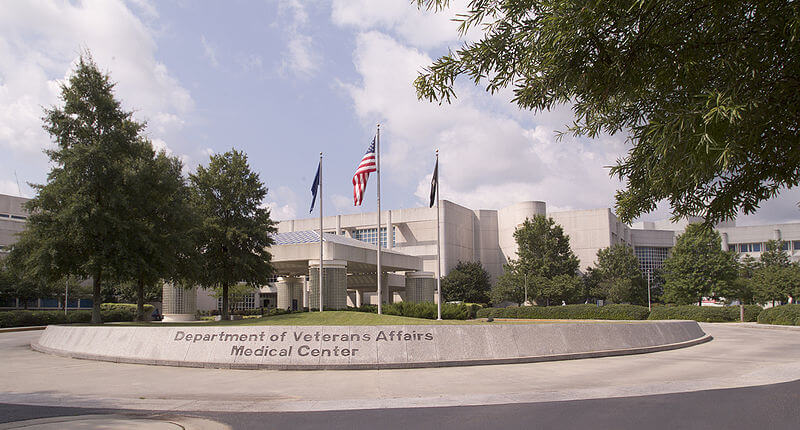VA Mission Act of 2018

CCK Law: Our Vital Role in Veterans Law
What is the VA Mission Act?
The VA Maintaining Internal Systems and Strengthening Integrated Outside Networks Act, or VA Mission Act, was signed by the President on June 6, 2018. This $52 billion bill overhauls veterans’ access to private healthcare, including urgent care, and caregiver benefits nationwide. Specifically, the VA Mission Act is aimed towards expanding private healthcare access for veterans who experience long wait times at their VA provider or are too far away from their VA healthcare provider to conveniently receive care at those facilities.
Importantly, the VA Mission Act passed just before the VA Choice Program was set to run out of funding in June of 2018. The Choice Act intended to give eligible veterans access to private healthcare in place of VA care when the wait time for an appointment at a VA facility was longer than 30 days, or the veteran lived more than 40 miles driving distance from a VA facility. The VA Mission Act seeks to remedy some of the more high-profile shortcomings of the Choice Act, such as VA’s slow pace of paying private providers for veterans’ care and limited access to care. Furthermore, the VA Mission Act proposes new access standards, which will make changes to both the wait time and distance eligibility requirements listed above.
The VA Mission Act also intends to expand VA’s Program of Comprehensive Assistance for Family Caregivers. The Caregiver Program was implemented in 2011 in an effort to provide benefits to caregivers (i.e. spouses or family members who end up leaving jobs to care for a veteran full-time due to the extent or nature of his or her disability) of post-9/11 disabled veterans. Caregivers are provided monthly compensation, medical training, and healthcare benefits. Over the years, there has been some controversy surrounding the program, as VA is reportedly dropping caregivers from the program. However, under the VA Mission Act, the Caregiver Program is set to provide benefits to caregivers of pre-9/11 veterans in addition to post-9/11 veterans, and provide oversight for underperforming VA facilities. This expansion of benefits to include eligible veterans from all eras of service will be implemented over the course of several years, mainly in two phases. VA reports that caregiver benefits will first become available to veterans who were injured on or before May 7, 1975, with further expansion to include veterans injured between 1975 and 2001 occurring two years later. Eligibility and compensation determinations will continue to be made by the Veterans Health Administration (VHA), and caregivers can still appeal adverse decisions.
Motivation Behind the VA Mission Act
The VA Mission Act is part of VA’s effort to innovate, upgrade, and pursue new ways to deliver the highest quality of care and service to veterans. This act serves to consolidate VA’s community care efforts into a single, simple-to-use program that puts veterans at the center of their VA health care decisions by ensuring veterans can choose the health care providers they trust. The current system consists of seven separate community care programs and has proven to be too difficult for veterans, their families, and VA employees to effectively navigate. VA acknowledges the strict and confusing qualification criteria such as driving distances and proximity to VA facilities that do not offer needed services. The VA Mission Act hopes to replace such criteria with improved eligibility guidelines centered around the convenience of veterans.
Concerns about the VA Mission Act
There are several concerns regarding the VA Mission Act, which is expected to take effect in June of 2019. Many individuals worry that shifting too many VA resources to outside clinics and doctors’ offices will deplete needed resources from the department’s facilities and ultimately lead to the privatization of veterans’ healthcare. Additionally, numerous veterans groups have expressed dissatisfaction with the behind the scenes, secretive nature of the Act’s drafting process. These groups feel as though much of the work in writing the new access standards has been done without sufficient input from the larger veterans community. Nevertheless, VA Secretary Robert Wilkie has adamantly rejected those “who will claim falsely and predictably that they represent a first step toward privatizing the department”. Finally, there is significant concern regarding the continuously growing VA budget and the inevitable costs of the Act. VA anticipates the implementation of the new access standards will more than triple the number of veterans eligible for outside care. Currently, only 8 percent of veterans in VHA qualify for community care programs (about 600,000 veterans). The new standards are expected to increase that to roughly 20-30 percent, which would result in somewhere between 1.5 million and 2.1 million patients.
However, VA officials also note that eligibility does not mean guaranteed use. In 2018, of all the veterans eligible for the VA Choice program, only about 36 percent used it. Additionally, less than 1 percent used those outside care appointments to cover all of their medical appointment needs.
About the Author
Share this Post
